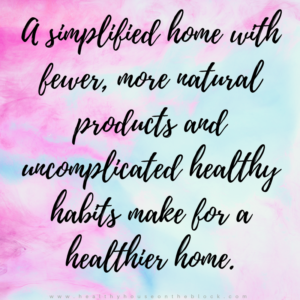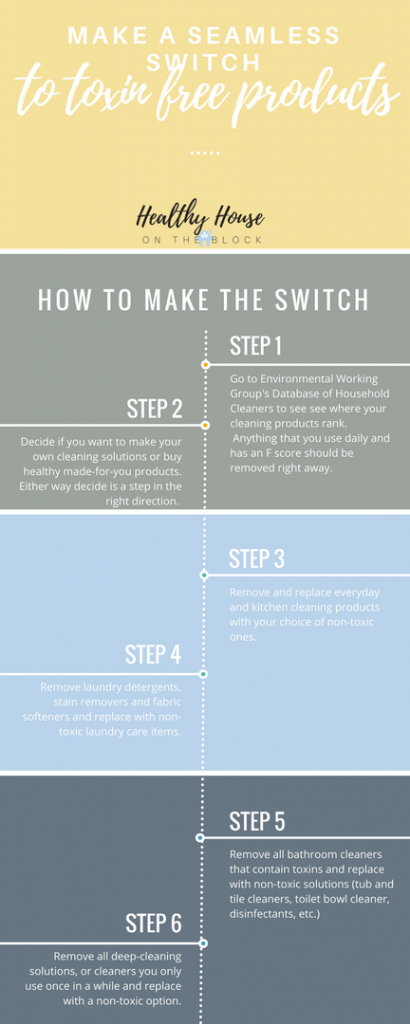
As a parent, I am fully aware of the constant battle keeping the house semi-clean can be. Kids’ standards of clean and our adult standards of clean are often very different. And my girls are no exception to this statement. The feeling of being in a constant battle against the dirt, random objects and grime in my house is all too real. And because I’m wiping my kitchen counter down what feels like eight bazillion times a day, I have made some very conscious choices about the cleaners I use.The sheer fact that the cleaners in my house get used on a VERY regular basis has caused me to research and look into their affects on my kids. One of the things I’ve learned as a mom is that kids’ bodies, immune systems and defenses are very different than our own. Their bodies are continuously changing and developing, which means the way they process different chemicals and toxins can be very different from the way an adult may process them.
This is especially true of babies and infants. For years I thought that cleaners just affected my family short-term with mild irritation of the nose and throat. But what I’ve found over my years of researching products and elements of cleaning products is their affect is much more serious. For me personally, I didn’t change a single think the first time I heard bleach and store-bought cleaners were harmful to health. I don’t think I even thought about changing what I was doing. As I began to hear more and more about health affects and just how long a chemical can stay within the body, I felt a nudge to change something in my own home.
But I felt completely overwhelmed, not knowing exactly where to start. I made the mistake of over-complicating the entire process of switching my cleaning products. I made it so difficult, I just couldn’t maintain my new healthy lifestyle. Over time I realized I was making the process of using natural and safe cleaners way too complicated. I want to share with you the basics of why our cleaning products matter when it comes to our precious kids and the exact, simplified steps it takes to change your habits and routines.
Why Spraying Cleaners Can be More Harmful
One of the biggest problems with cleaners is the application of them. Cleaners are created to be sprayed onto surfaces. While this is extremely convenience, it also means we must be extremely diligent when it comes to what exactly is in our cleaners.Spraying cleaners onto a surface allows partricles of the cleaner to become airborne. Once these particles enter the air, they can become easily ingested and inhaled by those around. This is a direct route to our bloodstream and unfortunately the chemicals used can stick around for quite sometime.
Overspray from cleaners is also a problem, especially if you have young children. The overspray from a cleaner can leave the chemicals or toxins present in the cleaner on unintended surfaces. If you have young children with poor hand to mouth habits, they are ingesting much more of the cleaner as their little hands touch many of the surfaces in our homes
With our skin having no safeguards against toxins, anything we come into contact with becomes quickly absorbed and brings the toxins directly to our organs and bloodstream. A small amount of cleaner can negatively impact a child’s body in a much more harmful way than the same amount to an adult.

Why Children are More at Risk than Adults
As you could imagine, children are much more at risk for becoming negatively affected by chemicals and toxins in comparison to adults. The reasons, however, are not quite what you might think.First, many of the chemicals that are in cleaning products are also found in dust particles. Dust particles, no matter how clean your house is, are found everywhere. And the reason this becomes such a problem to children is due to their hand to mouth habits. This means many of the dust particles in your house also end up in their mouth and become ingested.
The second problem is that children, and in particular, babies’ skin absorbs more toxins at a faster rate than adults’ skin. When this happens, the toxins are being brought more quickly to their organs, which are smaller in size. This means that the amount of toxins it takes to affect a child’s organs can be much less in comparison to the same amount that might mildly affect an adult.
Finally, it takes much less time for toxins to build up in a child’s system in comparison to an adult. Because children’s bodies are much smaller in comparison to ours, the toxins are building up more quickly and affecting the systems within the body at a much faster rate.
The Most Important Toxins to Know About
- Phthalates are derived from plastic and contain the same endocrine disrupting toxic solution as plastic products. They are also a a known carcinogen. This is one of those chemicals that is often times not listed.
- Tricolasan has been banned in many states, my home state of Minnesota is one of them. Triclosan is a disinfecting agent that is often in hand soaps and hand sanitizers, but also in cleaning products that sanitize and disinfect. It is a known carcinogen and extremely toxic as we are puting it directly on our skin.
- Perchloroethylene or PCE is a solvent used in polishes and cleaners. It is also in spot removers. The long term exposure to this toxic VOC is damage to the central nervous system, liver and kidneys. There is also some evidence that it puts some individuals at a higher risk for certain types of cancer.
- Sodium Hydroxide is used in the manufacturing of many soaps and detergents and can cause severe irritation to skin. It can also cause respiratory problems like sneezing, sore throat and runny nose. It can also cause severe inflammation of the lungs, which can be extremely dangerous to a child or adult with asthma.
- Chlorine and Ammonia are cleaning agents that disinfect, but that also cause burning and irritation to airways, skin and eyes. These chemicals affect those with allergies and asthma more seriously. But they can be just as irritating to a child who has sensitive skin and airways to begin with.
Affects of Cleaning Toxins in Kids
An important thing to know when it comes to cleaning is that almost all cleaning chemicals and toxins have both acute effects on the body and long term, chronic effects as well.This means that a single exposure to the chemical or toxin will most likely cause an isolated, single response from the body. This is usually in the form of irritated skin, or sneezing or sore throat. When a child, or anyone for that matter is exposed on a regular basis, there can be chronic or long term effects. This could be in the form of allergies, asthma or more serious problems like hormone disruption, liver or kidney issues or even cancer.
It’s important to remember that more exposure to some toxins allows them to build up in the system, causing long term, harmful effects.
Acute Symptoms to Cleaning Chemicals
- Irritated throat and nasal passages
- Chemical burn symptoms
- Irritated eyes/allergic reactions
- Lightheaded/Dizziness
Now, keep in mind that if a body’s response is any of these things listed, it’s also your body telling you that a chemical or toxin is unsafe for your body. It’s so important to listen to your body when it comes to chemicals and cleaning products. If something causes irritation, most likely it could also cause a long term problem. It’s the whole reason that your body is communicating with you in the first place.
Things to watch for and pay attention to in your own child, are responses like wheezing and sneezing. These are signs of an irritated respiratory system and if it occurs in direct response to a chemical cleaner, you know that those should be avoided in the future. Another thing to watch for is irritated eyes and allergic symptoms such as sneezing, runny nose or sore throat.
It’s also best not to have your baby or child around when you are cleaning with regular cleaners. If you do choose to have them around or they are near the room you are cleaning, try to use a chemical free cleaner, like Thieves.
Chronic & Long-term Symptoms
- Hormone disruption
- Asthma/Allergies
- Liver and kidney damage
- Nervous system depression
- Increased risk of cancer
Some of the risks that come with using chemical cleaners are serious problems. Some have been linked to things like delayed development and learning disabilities in the future. There is also a risk with hormone disruption, which can affect growth, demeanor and long term can affect the reproductive system.
One of the most common, and widely spread problems from cleaning solutions is the long term problems that children have chronic and lifelong problems with asthma and allergies. These are problems that can start off acute, meaning they are a temporary issue and will end up going away as your child gets older, but often times, asthma and allergies become a chronic, long-term problem. This is due to exposure over a long period of time, which allows the chemicals to build up within the body.
Nervous System disruption is another long-term problem that can end up affecting a child well into their adult years. Initially it can impair their large and fine motor skills, but those problems can last into adulthood if they aren’t taken care of right away.
We also know now that some chemicals that we use in our daily lives are carcinogenic, or they cause cancer. We also know that they make the liver and kidneys filter out more pollutants and harmful things from our bodies. This is why they are also linked to liver and kidney damage.
How to Make the Switch
I want to encourage you to feel empowered instead of overwhelmed when it comes to removing and replacing your cleaners. The timeline below can be a huge aid to you as well as the resources below to help make the switch.

My Go-To Cleaning Products

Like I had mentioned earlier, I’ve really gone through a journey with my cleaning products and cleaning routine. I started out overwhelmed and ended up over-complicating the whole thing. Now that I’ve taken a step back and realized that more is not always better, I’ve paired my cleaning down to just a few key items.I’ve learned in many aspects of the my life that simpler is in fact better. I’ve created just about the simplest cleaning cabinet with a few key ingredients. One of my go-to cleaners is Thieves. Since the moment I used the first sample, I was hooked. Not only does this cleaner do an incredible job, but it’s so safe for my kids to be around as well.
I remember reading the warning label that says if ingested to simply drink a glass of water. YES. This is what had me completely sold on Thieves. I let my kids use the cleaner and I have complete peace of mind.
Below are some resources to get you started with healthier cleaners in your own home.





